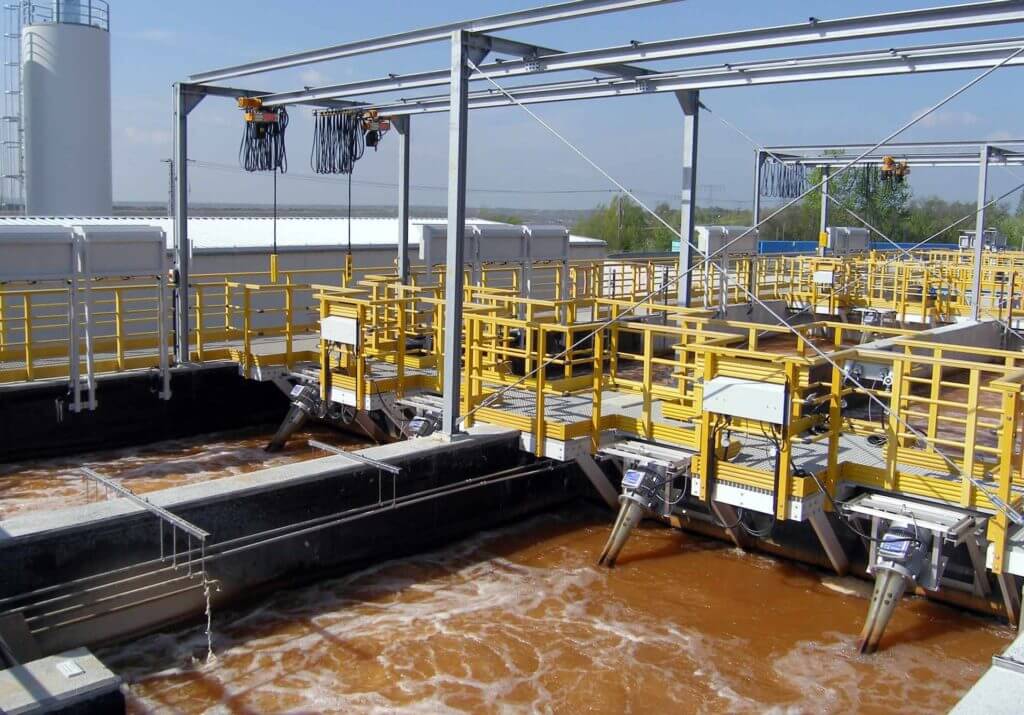Industrial Waste Water Treatment-- Lasting Solutions for Industrial Water Monitoring
Industrial Waste Water Treatment-- Lasting Solutions for Industrial Water Monitoring
Blog Article
Key Strategies in Hazardous Waste Water Treatment Processes
The treatment of industrial wastewater is an important facet of environmental management, including a variety of strategies made to mitigate the impact of pollutants. Improvements in modern technologies such as membrane layer filtration and advanced oxidation processes offer ingenious services for improving treatment effectiveness.
Physical Treatment Techniques
Exactly how successfully can physical therapy techniques attend to the intricacies of commercial wastewater? Physical treatment techniques play a critical function in the preliminary stages of wastewater management, focusing primarily on the elimination of solids and huge particulates. Strategies such as sedimentation, flotation protection, and filtering are important for minimizing the focus of put on hold solids, therefore boosting the effectiveness of subsequent treatment procedures.
Sedimentation involves the gravitational settling of solids, enabling for the separation of larger materials from the wastewater. This approach is especially effective in making clear water prior to chemical or organic therapies.
Additionally, flotation techniques, which utilize air bubbles to raise suspended solids to the surface area for removal, are reliable in treating wastewater with high focus of fats, oils, and greases. Generally, physical treatment approaches work as a vital very first step in the extensive monitoring of industrial wastewater, making sure that the load on succeeding treatment stages is decreased and boosting total therapy effectiveness.
Chemical Treatment Methods
While physical treatment techniques prepared for effective wastewater monitoring, chemical treatment techniques are essential for resolving the a lot more complex impurities typically found in commercial effluents. These methods use numerous chemical agents to speed up, neutralize, or oxidize harmful materials, guaranteeing an extra complete elimination of contaminants.
One usual method is coagulation and flocculation, where chemical coagulants such as light weight aluminum sulfate or ferric chloride are added to advertise the gathering of suspended fragments. This process improves solid-liquid splitting up, reducing turbidity and enhancing water top quality. Additionally, neutralization procedures are used to adjust the pH of wastewater, utilizing bases or acids to neutralize acidic or alkaline streams, respectively.
Oxidation-reduction responses play an essential function in derogatory natural contaminants and microorganisms. Chemical oxidants like chlorine, ozone, or hydrogen peroxide are used to damage down intricate natural compounds, making them less damaging or extra biodegradable. Advanced oxidation processes (AOPs) integrate several oxidation strategies to boost toxin removal effectiveness.
Biological Treatment Processes
The efficiency of wastewater treatment is dramatically boosted by organic therapy processes, which harness the natural metabolic activities of bacteria to disintegrate raw material and eliminate contaminants. Industrial Waste Water Treatment. These processes mainly involve aerobic and anaerobic digestion, each customized for certain kinds of wastewater
Cardiovascular treatment processes make use of oxygen to sustain microbial development, promoting the break down of organic pollutants right into co2 and water. Typical methods consist of turned on sludge systems, where oygenation storage tanks facilitate the blending of wastewater with bacteria, and dripping filters, which encourage biofilm growth on media surface areas.
Alternatively, anaerobic therapy processes take place in the lack of oxygen, utilizing anaerobic microorganisms to disintegrate organic issue, leading to biogas production, an eco-friendly power source. Anaerobic digesters are usually utilized in industrial setups for this purpose, properly minimizing the volume of sludge while creating useful biogas.
The selection of an organic treatment approach depends on wastewater features, treatment objectives, and regulatory criteria. The combination of biological procedures in wastewater treatment not only enhances pollutant removal effectiveness however additionally advertises sustainability by minimizing chemical usage and supporting source recuperation.
Advanced Oxidation Processes

Common AOP techniques consist of Fenton's photocatalysis, ozonation, and reagent. Fenton's reagent, a combination of hydrogen peroxide and ferrous iron, catalyzes the formation of hydroxyl radicals, making it effective for dealing with wastewater consisting of phenolic substances and various other stubborn substances.
AOPs provide numerous advantages, consisting of decreased sludge production and the click to investigate ability to treat wastewater with high concentrations of natural contaminants. The application of AOPs calls for mindful factor to consider of operational parameters and cost-effectiveness, making certain that these advanced strategies are properly incorporated into existing wastewater treatment systems.
Membrane Layer Purification Technologies

Microfiltration is effective for eliminating suspended microorganisms and solids, while ultrafiltration targets smaller sized natural molecules and infections. Nanofiltration links the space in between ultrafiltration and reverse osmosis, successfully eliminating divalent ions and natural substances. Reverse osmosis gives the highest degree of filtration, used largely for desalination and eliminating mono-valent ions.
Membrane innovations provide many benefits, consisting of low power consumption view contrasted to standard treatment approaches, modular layout for scalability, and the capacity for water healing and reuse. Obstacles such as membrane fouling click over here now and the requirement for regular upkeep should be dealt with to make sure system efficiency. Generally, membrane layer purification technologies stand for a vital element of contemporary commercial wastewater treatment methods, advertising sustainability and source conservation in water monitoring.
Verdict
In verdict, commercial wastewater therapy utilizes a varied selection of strategies, consisting of physical, chemical, biological, and progressed methods. Proceeded improvements in these methodologies will certainly better enhance the efficiency and effectiveness of wastewater therapy processes in commercial settings.
The therapy of industrial wastewater is a vital facet of environmental monitoring, involving an array of techniques made to minimize the impact of contaminants.Exactly how properly can physical therapy techniques attend to the intricacies of industrial wastewater?Advanced oxidation procedures (AOPs) represent a sophisticated approach in industrial wastewater treatment, developed to efficiently weaken natural pollutants that are commonly resistant to standard treatment methods (Industrial Waste Water Treatment).In final thought, commercial wastewater treatment uses a varied selection of strategies, including physical, chemical, biological, and progressed approaches. Continued improvements in these approaches will better enhance the effectiveness and efficiency of wastewater therapy procedures in industrial settings
Report this page